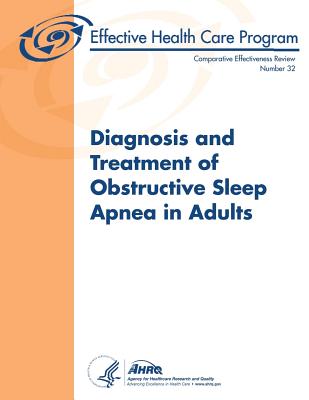Obstructive sleep apnea (OSA) is a relatively common disorder in the U.S. that affects people of all ages, but is most prevalent among the middle-aged and elderly. Affected individuals experience repeated collapse and obstruction of the upper airway during sleep, which results in reduced airflow (hypopnea) or complete airflow cessation (apnea), oxygen desaturation, and arousals from sleep. Adverse clinical outcomes associated with OSA include: cardiovascular disease, hypertension, non-insulin-dependent diabetes, and increased likelihood of motor vehicle and other accidents due to daytime hypersomnolence. Studies estimate the prevalence of OSA at approximately 10 to 20% of middle-aged and older adults. Evidence also indicates that these rates are rising, likely due to increasing rates of obesity. Based on the considerable mortality and morbidity associated with it and its attendant comorbidities, OSA is an important public health issue. Complicating diagnosis and treatment, however, is the great degree of clinical uncertainty that exists regarding the condition, due in large part to inconsistencies in its definition. Ongoing debate surrounds what type and level of respiratory abnormality should be used to define the disorder as well as what is the most appropriate diagnostic method for its detection. In addition, there is no current established threshold level for the apnea-hypopnea index (AHI) that would indicate the need for treatment. By consensus, people with relatively few apnea or hypopnea events per hour (often less than 5 or less than 15) are not formally diagnosed with OSA. Also of concern are the high rates of perioperative and postoperative complications among OSA patients, as are the numbers of asymptomatic and symptomatic individuals who remain undiagnosed and untreated. Three main categories of outcomes of interest in comparative effectiveness research are clinical (or health) outcomes, intermediate or surrogate outcomes, and adverse events. Objective clinical outcomes relevant to patients with OSA include comorbidities found to be associated with untreated sleep apnea, primarily cardiovascular disease and non-insulin-dependent diabetes. In addition, mortality due to cardiovascular disease, diabetes, motor vehicle accidents, and other causes represent important adverse outcomes of OSA. Intermediate outcomes of interest in the management of patients with OSA include sleep study measures, blood pressure, and hemoglobin A1c. Key Questions that are clinically relevant for the diagnosis and treatment of OSA were developed with input from domain experts and other stakeholders and from comments received in response to public review. Key Questions: 1. How do different available tests compare in their ability to diagnose sleep apnea in adults with symptoms suggestive of disordered sleep? How do these tests compare in different subgroups of patients, based on: race, sex, body mass index, existing non-insulin dependent diabetes mellitus, existing cardiovascular disease, existing hypertension, clinical symptoms, previous stroke, or airway characteristics? 2. How does phased testing (screening tests or battery followed by full test) compare to full testing alone? 3. What is the effect of preoperative screening for sleep apnea on surgical outcomes? 4. In adults being screened for obstructive sleep apnea, what are the relationships between apnea-hypopnea index or oxygen desaturation index and other patient characteristics with respect to long-term clinical and functional outcomes? 5. What is the comparative effect of different treatments for obstructive sleep apnea in adults? 6. In obstructive sleep apnea patients prescribed nonsurgical treatments, what are the associations of pretreatment patient-level characteristics with treatment compliance? 7. What is the effect of interventions to improve compliance with device use (positive airway pressure, oral appliances, positional therapy) on clinical and intermediate outcomes?
| FindBook |
有 1 項符合
Diagnosis and Treatment of Obstructive Sleep Apnea in Adults的圖書 |
 |
Diagnosis and Treatment of Obstructive Sleep Apnea in Adults 作者:U. S. Department of Health and Human Services(COR)/ Agency for Healthcare Research and Quality (COR) 出版社:Createspace Independent Publishing Platform 出版日期:2013-04-15 語言:英文 規格:平裝 / 496頁 / 27.9 x 21.6 x 2.5 cm / 普通級 |
| 圖書館借閱 |
| 國家圖書館 | 全國圖書書目資訊網 | 國立公共資訊圖書館 | 電子書服務平台 | MetaCat 跨館整合查詢 |
| 臺北市立圖書館 | 新北市立圖書館 | 基隆市公共圖書館 | 桃園市立圖書館 | 新竹縣公共圖書館 |
| 苗栗縣立圖書館 | 臺中市立圖書館 | 彰化縣公共圖書館 | 南投縣文化局 | 雲林縣公共圖書館 |
| 嘉義縣圖書館 | 臺南市立圖書館 | 高雄市立圖書館 | 屏東縣公共圖書館 | 宜蘭縣公共圖書館 |
| 花蓮縣文化局 | 臺東縣文化處 |
|
|
圖書介紹 - 資料來源:博客來 評分:
圖書名稱:Diagnosis and Treatment of Obstructive Sleep Apnea in Adults
|










